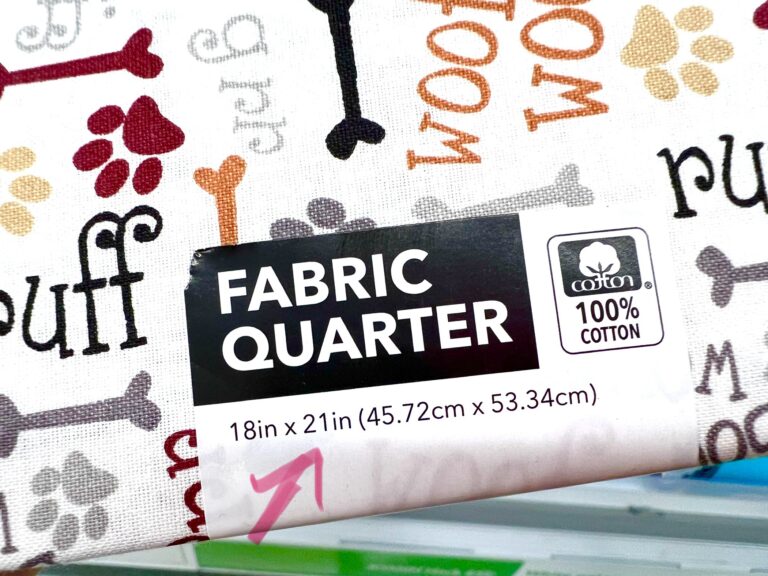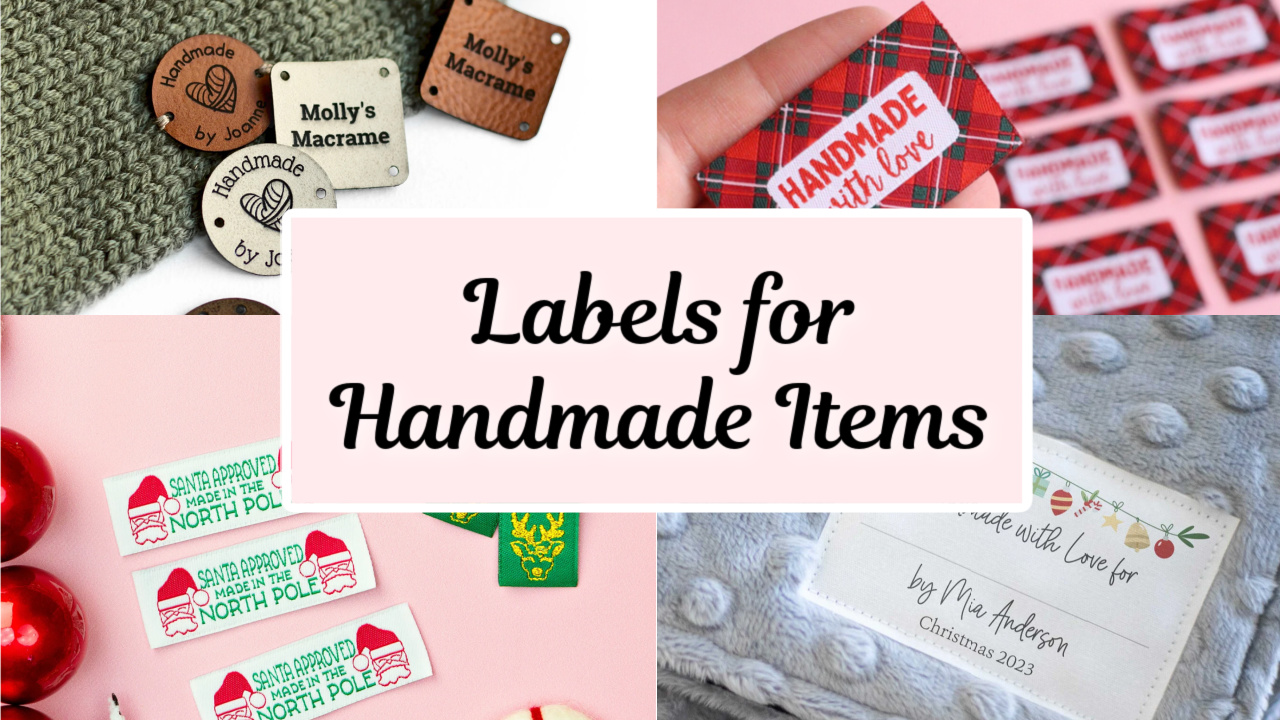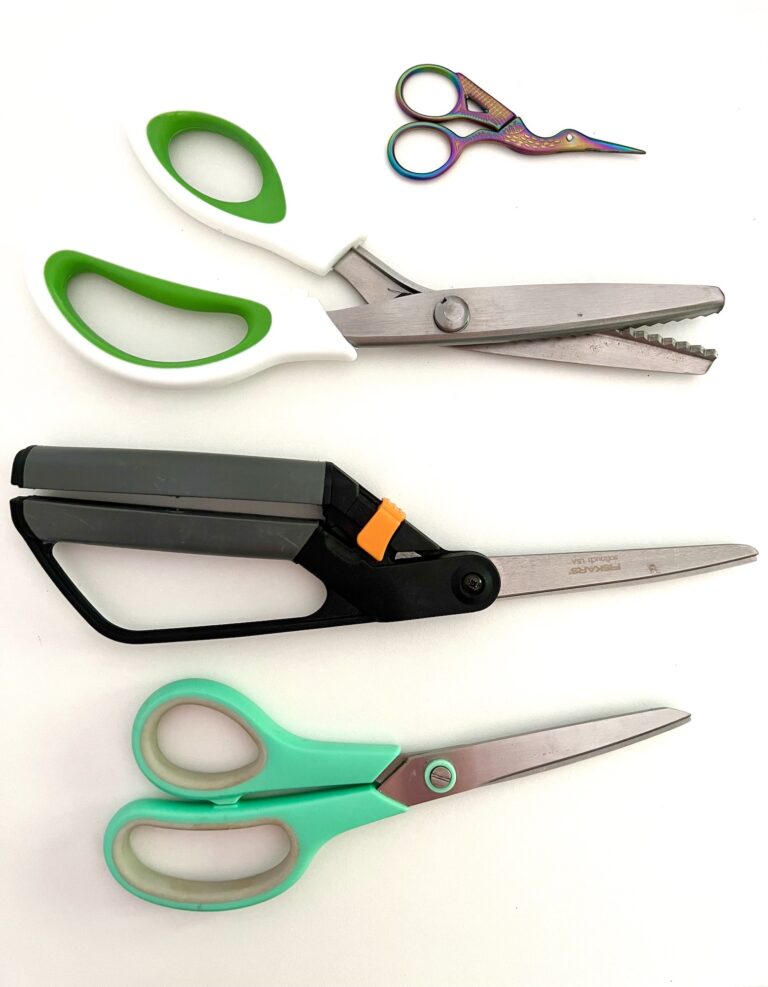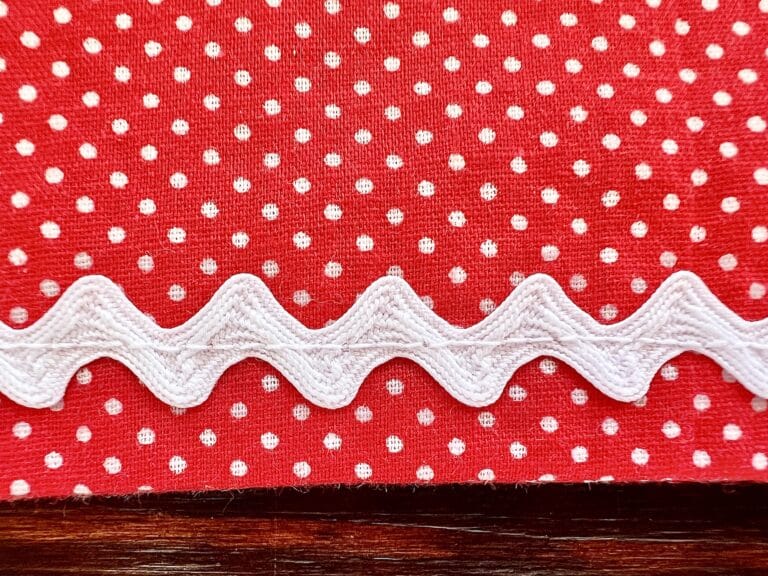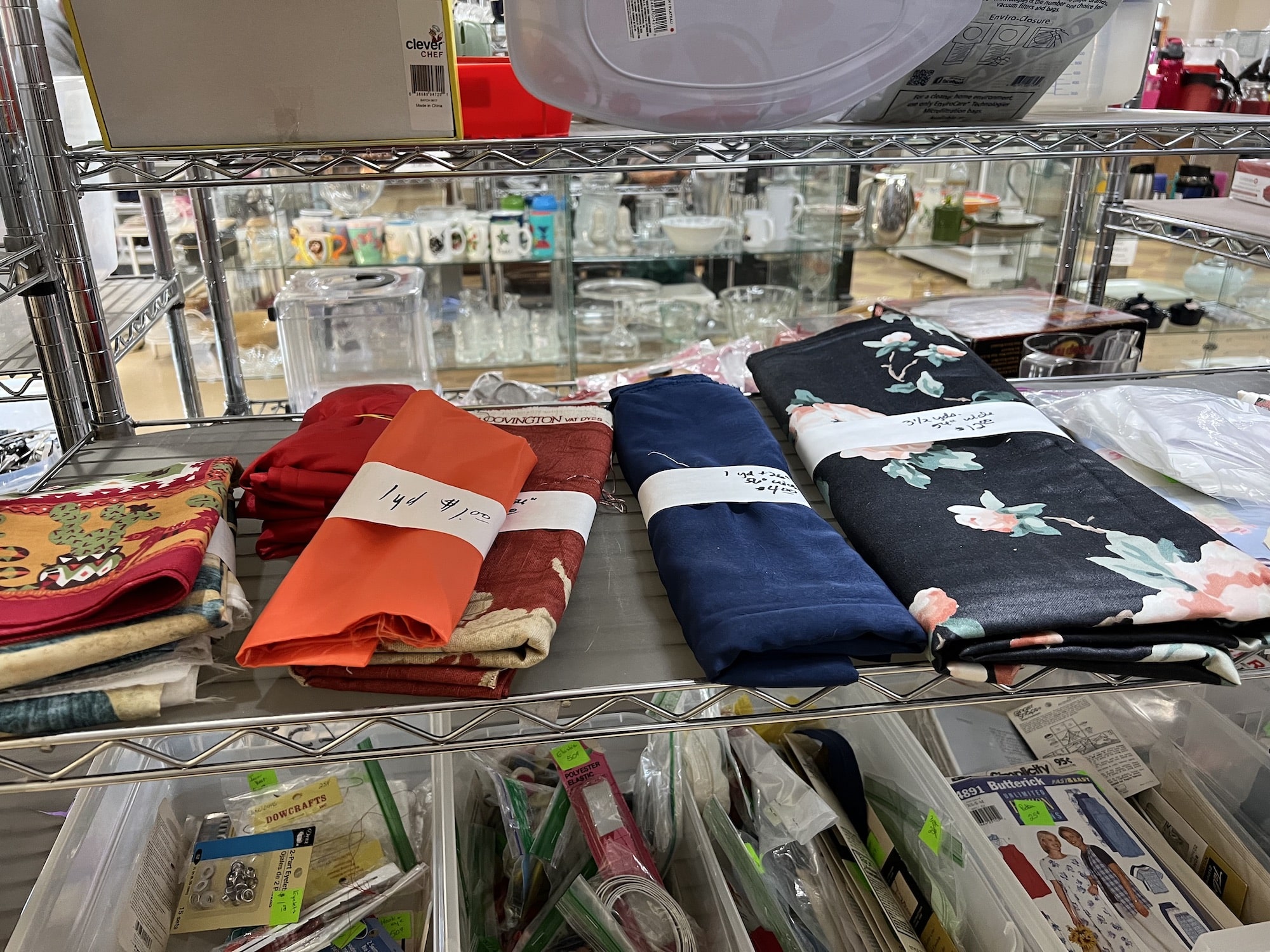How to Prewash Fabric Before Sewing: When You Should Do It
Should you pre-wash fabric before starting a sewing project? Sometimes yes, but often the answer is no. Honestly, I prewash fabric only about 20% of the time.
Pre-washing new fabric is a topic of much debate among sewists and a matter of personal preference. While prepping unwashed fabric for the first time isn’t difficult, it can be a delay in starting your sewing projects.
When should you take this important step and when should you skip it? Here are all the answers!
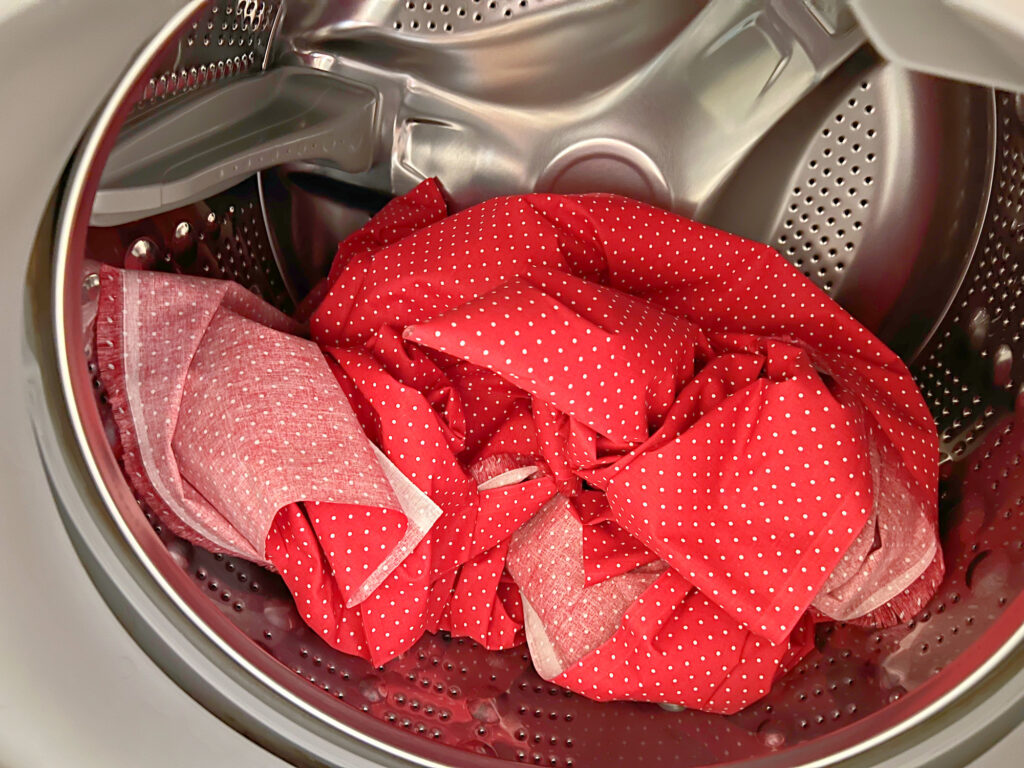
When You Should Prewash Your Fabric
There are two main reasons you should pre wash your fabric:
- To pre shrink your fabric if the item will be laundered later
- To remove chemicals and finishes from the surface of the fabric
Pre-Shrinking
If you will be washing the item you are sewing (such as clothing, napkins, pillow cases or dog toys), then you definitely want to pre wash the fabric before your start your project.
Some types of fabric can shrink, especially natural fibers such as cotton fabric, double gauze or linen when washed in warm water or hot water. You may experience up to a 10% shrinkage in the fabric once it is washed.
If the fabric shrinks after it has been sewn, the seams will not lay flat and could start to pucker. The item that you made will also be much smaller than when you sewed it.
So for clothing, the final garment that you make might not fit correctly when you put it on after washing. This is especially important for fitted items.
Removing Excess Dyes, Pesticides and Starch Treatments
Removing chemicals, such as chemical sizing, as well as starch treatments from the fabric is also an important reason to prewash fabric before sewing.
If you have noticed, fabric is usually wrinkle-free and somewhat stiff when on the bolt. That makes it look better and stay on the bolt more easily, but chemical finishes are often used during the manufacturing process to achieve that result.
If you want to soften the fabric, pre-washing is definitely recommended.
Avoiding unnecessary exposure to chemicals and dyes is another major reason for prewashing fabric. This is a good idea for items that will be touching skin, such as bedding and clothing.
This is especially important for sensitive skin.
You will always want to pre wash a fabric that babies, children or pets will be in contact with or may put in their mouths, such as a burp cloth or dog bandana.
Vibrantly colored fabrics, such as red, purple or dark blue fabrics, are known for bleeding color when washed because of the excess dyes remaining on the fabric. You definitely want to wash dark colored fabrics separately because those excess dyes can still stain other items, even in the wash!
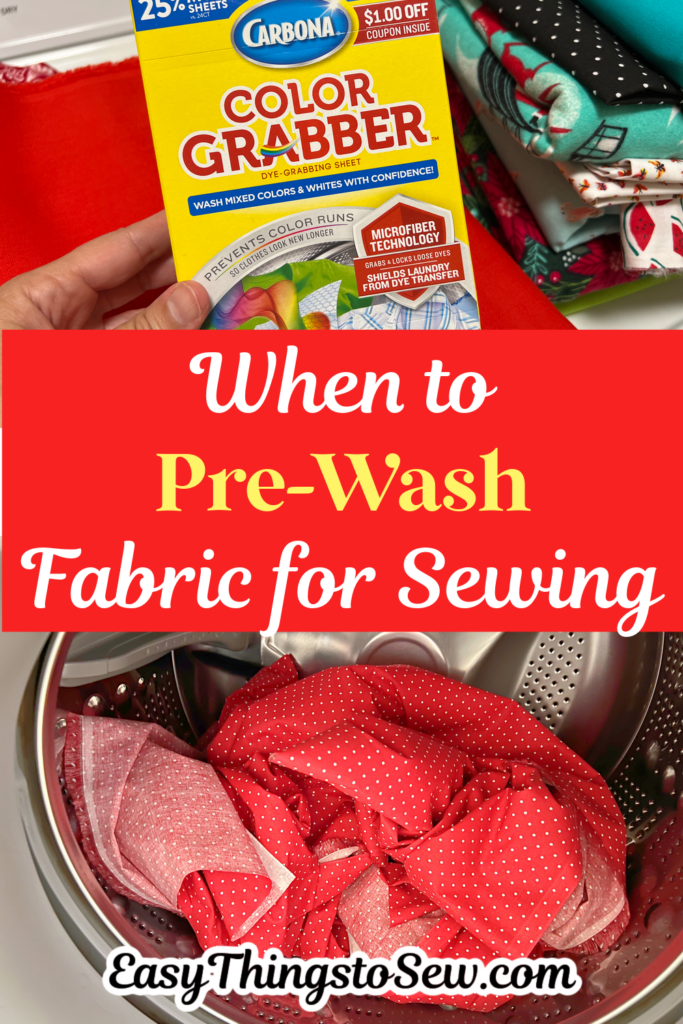
Pesticides can also be sprayed on fabrics to keep it safe while being transported in container ships.
When You Should Not Pre-Wash Your Fabric
If you won’t be washing the finished product that you are sewing, you probably don’t need to pre-wash the fabric.
Even if you are spot cleaning the item later, such as a purse, pouch or a pillow sham, you more than likely don’t need to prewash the fabric.
Spot cleaning will not shrink the fabric as a washing machine would. (Unless you are using a type of fabric which could be damaged with spot cleaning, such as silk.)
For dry-clean only fabrics or items that you will be bringing to the dry cleaners for dry cleaning rather than washing, you do not need to pre-wash.
This is especially true for a finished garment such as a blazers or fancy dress.
Synthetic fibers, such as polyester fabrics and nylon, will usually not shrink when washed, so the only reason for prewashing is to remove chemical finishes.
How to Prewash Fabric Before Sewing
Always refer to the washing instructions or care instructions of the fabric if you are unsure how to launder the type of fabric.
You will want to pre wash the fabric in the same way that you will wash the finished project.
For instance, if you will wash pillowcases in hot water and dry in the dryer, then you should pre wash the fabric in hot water and put in the tumble dryer before starting to sew.
- For items only washed in cold water, then machine wash in cold water.
- If you will be hand washing delicate fabrics in baby shampoo and allowing to dry in the sun, then hand wash the fabric.
- For removing chemicals from the fabric and not needing to wash the project later, then I suggest washing the fabric on delicates cycle.
- Fabric softener is not needed for the first wash.
It is not necessary to use a laundry detergent while pre-washing, since you are only washing to expose the fabric to water and heat. However, if you would like to add detergent to help remove chemicals or dirt, use a smaller amount than you would use to wash a load of dirty clothes.
Wash the fabric on its own in the washing machine, without adding the fabric to other clothing, towels or bedding. There can be a lot of excess dye that comes off the fabric and you do not want it to stain other items.
If you have multiple pieces of fabric to pre-washing, it is a good idea to wash similar colors together. For instance, dark colors in one load and light colors in the other.
A color catchers laundry sheets (such as Carbona) can really help to grab extra dye that come off the fabric. This is a good idea if you must wash lights and darks together.
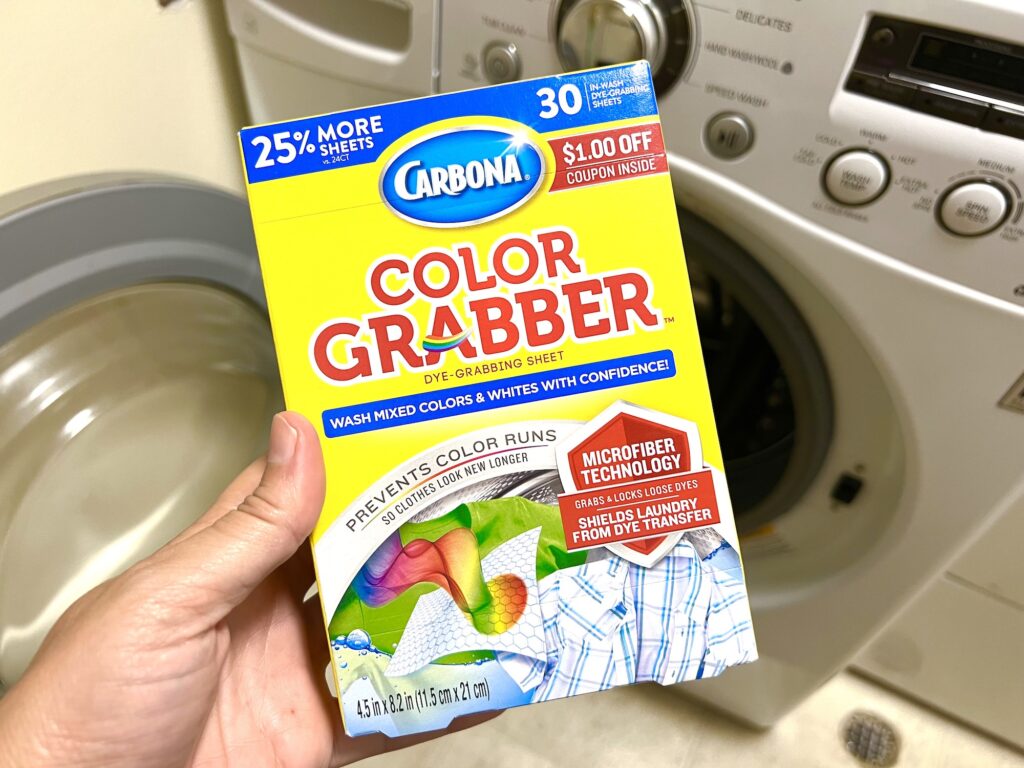
Once dry, now is a good time to iron your fabric and remove the wrinkles before you start cutting patterns.
Preventing Fraying While Washing
Unfinished fabric will likely fray on the raw edges while washing. The selvedge edge will not fray, but the cut sides will.
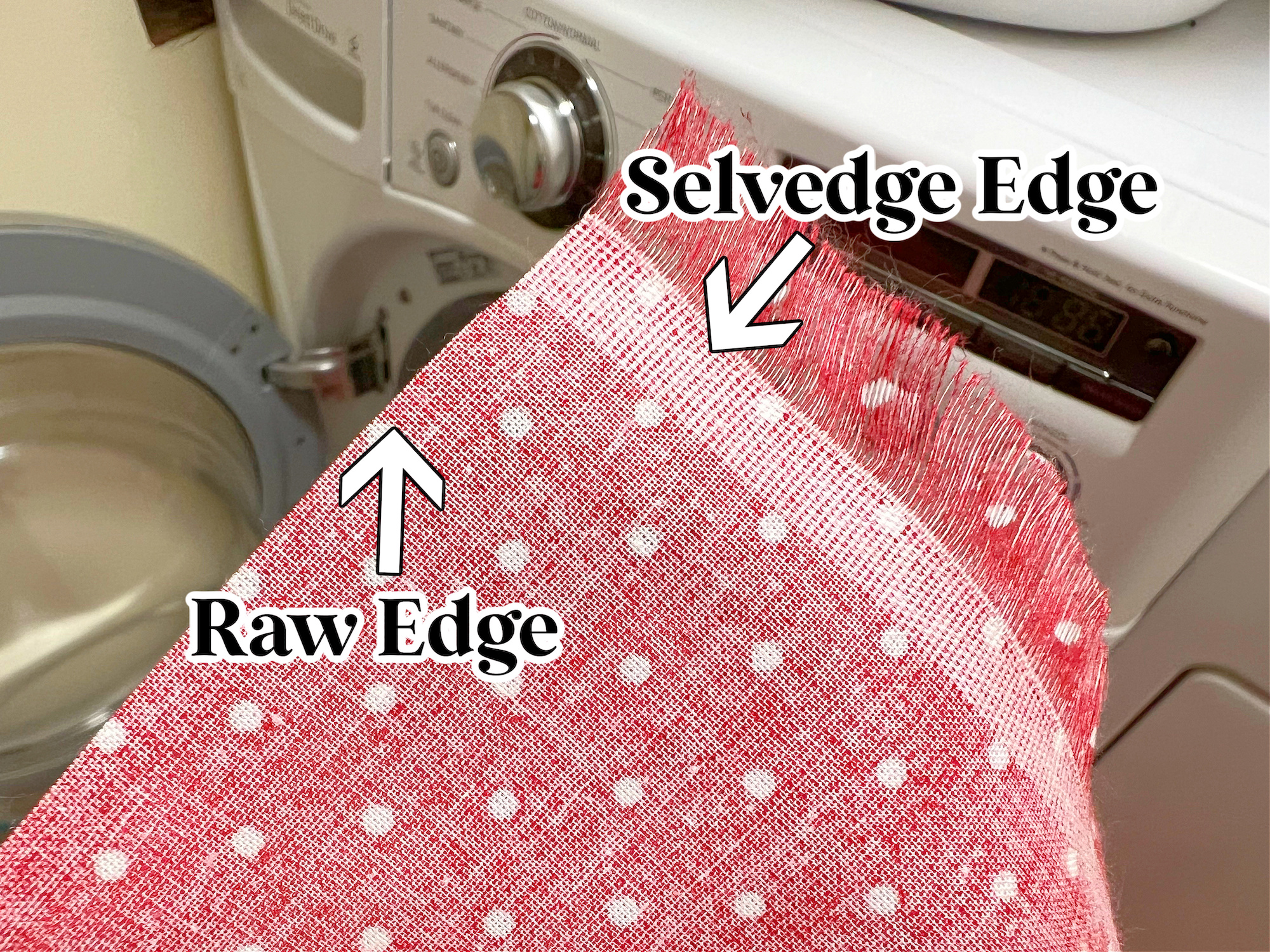
I never do anything to prevent fraying when pre-washing my fabric. I just cut off the frayed sides using one of these types of sewing scissors before starting to measure for my patterns.
However, you may have a length of fabric that you cannot lose any length on. Or maybe the fabric would fray too much if you don’t pre-treat it beforehand.
Here are some tips for preventing fraying:
- Basting the edges.
- Put in a mesh laundry bag before washing. (This is the method we use.)
- Sew a zig zag stitch on the edge.
- Use a serger to finish the edges.
- Use pinking shears to cut the edges to prevent some fraying.
- Pre-fray your fabric by pulling out some of the long threads to start the fraying on the unfinished edge. This will prevent additional fraying.
Check out my before and after videos of how much my fabric frayed during pre-washing in my YouTube video below:
This is just one of our beginner sewing tips that you need to know! See our entire list of sewing hacks for more smart ideas.


